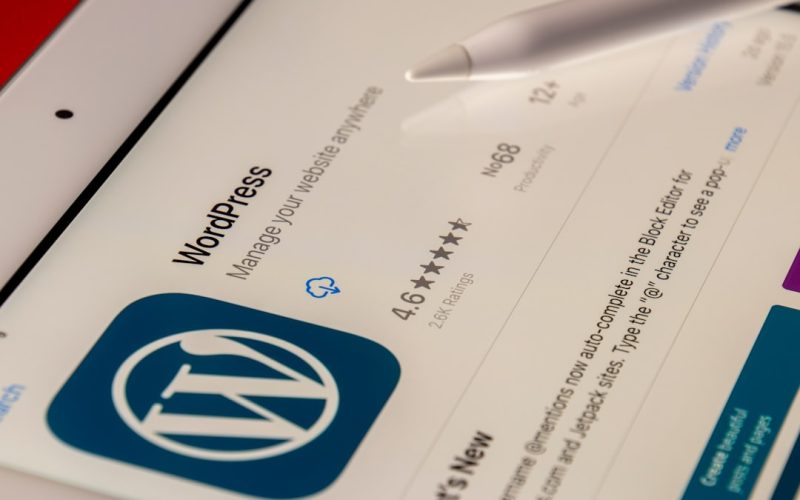When I first decided to venture into the world of e-commerce, one of the most critical decisions I faced was selecting the right e-commerce plugin for my WordPress site. With a plethora of options available, it was essential for me to consider my specific needs and the features each plugin offered. I quickly learned that WooCommerce is one of the most popular choices, boasting a vast array of functionalities and a supportive community.
However, I also explored alternatives like Easy Digital Downloads and Shopify, each catering to different types of online businesses. The key for me was to assess not only the features but also the scalability of the plugin as my business grew. As I delved deeper into my research, I realized that compatibility with my existing themes and plugins was another crucial factor.
I wanted a solution that would seamlessly integrate with my current setup without causing conflicts or performance issues. Additionally, I considered the level of support and documentation available for each plugin. A robust support system can make all the difference when I encounter challenges or need guidance during the setup process.
Ultimately, I chose WooCommerce for its flexibility and extensive resources, but I made sure to keep an open mind about other options as my business evolved.
Table of Contents
ToggleKey Takeaways
- When choosing an e-commerce plugin for your WordPress site, consider factors such as ease of use, features, and compatibility with your site’s theme and other plugins.
- Setting up your WordPress site for e-commerce involves installing and configuring the chosen e-commerce plugin, setting up payment gateways, and creating product categories.
- When selecting and customizing a theme for your online store, prioritize mobile responsiveness, user-friendly navigation, and a clean, professional design.
- Adding products and categories to your store requires high-quality images, detailed descriptions, and effective organization to enhance the shopping experience for customers.
- Setting up payment gateways and shipping options involves choosing reliable and secure payment processors, as well as offering flexible shipping methods to accommodate customer preferences.
Setting Up Your WordPress Site for E-commerce
Ensuring Reliable Hosting
Once I settled on an e-commerce plugin, the next step was setting up my WordPress site to accommodate my online store. This process began with ensuring that my hosting provider could handle the demands of an e-commerce platform. I opted for a hosting plan that offered optimized performance for WordPress sites, which was crucial for providing a smooth shopping experience for my customers.
Configuring Basic and E-commerce Settings
After securing a reliable hosting service, I installed WordPress and configured the basic settings to align with my business goals. With the foundation in place, I focused on essential settings specific to e-commerce. This included configuring my site’s permalinks for better SEO and user experience, as well as setting up essential pages like the shop, cart, and checkout pages.
Customizing for My Target Audience
I also took the time to adjust my site’s timezone and currency settings to ensure that everything was tailored to my target audience. By meticulously going through these steps, I laid a solid groundwork for my online store, which would ultimately contribute to its success.
Selecting and Customizing a Theme for Your Online Store

Choosing the right theme for my online store was another pivotal moment in my e-commerce journey. I wanted a theme that not only reflected my brand’s identity but also provided an intuitive shopping experience for my customers. After browsing through numerous options in the WordPress theme repository and third-party marketplaces, I finally settled on a responsive theme that offered customization capabilities. This flexibility allowed me to tailor the design elements to match my brand’s aesthetics while ensuring that the site was mobile-friendly. Customization was an exciting part of the process for me.
I experimented with different color schemes, fonts, and layouts to create a visually appealing storefront. Additionally, I made sure to optimize the theme for speed and performance since slow-loading pages can deter potential customers. By utilizing built-in customization tools and plugins, I was able to create a unique look that resonated with my target audience while maintaining functionality.
The end result was a cohesive online presence that effectively showcased my products.
Adding Products and Categories to Your Store
| Category | Number of Products | Average Time to Add |
|---|---|---|
| Electronics | 150 | 10 minutes |
| Clothing | 200 | 15 minutes |
| Home & Garden | 100 | 12 minutes |
With my theme in place, it was time to populate my online store with products. This step required careful planning and organization, as I wanted to ensure that customers could easily navigate through my offerings. I started by creating product categories that made sense for my inventory, grouping similar items together to enhance user experience.
This categorization not only helped in organizing my products but also played a significant role in improving searchability within the store. As I added products, I paid close attention to details such as product descriptions, images, and pricing. High-quality images were essential in capturing customer interest, so I invested time in taking professional photos that showcased each item effectively.
Writing compelling product descriptions was equally important; I aimed to highlight key features and benefits while incorporating relevant keywords for SEO purposes. By focusing on these elements, I created an engaging shopping experience that encouraged visitors to explore further and ultimately make purchases.
Setting Up Payment Gateways and Shipping Options
One of the most critical aspects of running an e-commerce store is setting up payment gateways and shipping options. After researching various payment processors, I decided to integrate PayPal and Stripe into my store. These platforms are widely recognized and trusted by consumers, which helped instill confidence in potential buyers.
The setup process was straightforward with WooCommerce, allowing me to configure payment settings quickly while ensuring that transactions would be secure. Shipping options were another area where I had to make thoughtful decisions. I wanted to provide flexibility for my customers while keeping shipping costs manageable for myself.
After evaluating different shipping methods, I opted for a combination of flat-rate shipping and free shipping on orders over a certain amount. This strategy not only incentivized larger purchases but also simplified the shipping process for me. By clearly communicating shipping policies on my site, I aimed to enhance transparency and build trust with my customers.
Integrating Social Media and Email Marketing Tools

To effectively promote my online store, integrating social media and email marketing tools became essential components of my strategy. I recognized that social media platforms could serve as powerful channels for driving traffic to my site and engaging with potential customers. By linking my store to platforms like Instagram and Facebook, I could showcase products visually while reaching a broader audience.
Additionally, I utilized social sharing buttons on product pages to encourage customers to share their favorite items with their networks. Email marketing was another avenue I explored to nurture relationships with customers and drive repeat business. I chose an email marketing service that seamlessly integrated with WooCommerce, allowing me to capture email addresses through sign-up forms on my site.
By offering incentives such as discounts or exclusive content in exchange for email subscriptions, I built a growing list of potential customers. Regular newsletters featuring new products, promotions, and valuable content helped keep my audience engaged and informed about what was happening in my store.
Optimizing Your Store for Search Engines
As my online store began taking shape, optimizing it for search engines became a priority. I understood that effective SEO practices could significantly impact my store’s visibility in search results, ultimately driving organic traffic. To start, I conducted keyword research relevant to my products and industry, identifying terms that potential customers might use when searching online.
Incorporating these keywords into product titles, descriptions, and meta tags helped improve searchability. In addition to keyword optimization, I focused on enhancing site speed and mobile responsiveness—two critical factors that search engines consider when ranking websites. Utilizing caching plugins and optimizing images contributed to faster loading times, while ensuring that my site was mobile-friendly allowed users on various devices to have a seamless shopping experience.
By implementing these SEO strategies, I aimed to increase my store’s visibility and attract more potential customers.
Implementing Security Measures to Protect Customer Data
As an online retailer, safeguarding customer data is paramount in building trust and credibility. To protect sensitive information such as payment details and personal data, I took several security measures when setting up my e-commerce store. First and foremost, I ensured that my website had an SSL certificate installed, which encrypts data transmitted between users and the server—an essential step in securing transactions.
Additionally, I implemented security plugins designed specifically for WordPress sites. These plugins provided features such as firewall protection, malware scanning, and login attempt monitoring—tools that helped mitigate potential threats. Regularly updating all themes and plugins also played a crucial role in maintaining security; outdated software can leave vulnerabilities that hackers may exploit.
By prioritizing security measures from the outset, I aimed to create a safe shopping environment for my customers.
Testing and Launching Your Online Store
Before officially launching my online store, thorough testing was essential to ensure everything functioned smoothly. This phase involved checking all links, testing payment gateways, and simulating the entire shopping experience from product selection to checkout. By placing test orders myself, I could identify any potential issues or areas for improvement before welcoming real customers.
Once testing was complete and any necessary adjustments were made, it was time for the big launch! To generate excitement around the opening of my store, I utilized social media announcements and email marketing campaigns to inform followers about the launch date and any special promotions available at launch time. The anticipation built up during this period made the actual launch feel like a significant milestone in my entrepreneurial journey.
Managing Orders and Inventory
After launching my online store, managing orders and inventory became an ongoing responsibility that required attention to detail and organization. With WooCommerce’s built-in order management system, tracking orders became more manageable; I could easily view order statuses, process shipments, and communicate with customers regarding their purchases.
Keeping customers informed about their order status helped enhance their overall shopping experience.
Inventory management was another critical aspect of running an e-commerce business effectively. To avoid overselling or running out of stock unexpectedly, I implemented inventory tracking features within WooCommerce. This allowed me to monitor stock levels in real-time and receive notifications when items were running low.
By staying proactive about inventory management, I aimed to ensure that customers could find what they were looking for without frustration.
Growing Your Online Store with WordPress Plugins and Extensions
As my online store began gaining traction, exploring additional WordPress plugins and extensions became vital for growth. There are countless plugins available that can enhance functionality or streamline processes within an e-commerce environment. For instance, integrating customer review plugins allowed me to showcase testimonials from satisfied buyers—an effective way to build trust with new visitors.
I also explored marketing automation tools that could help me manage campaigns more efficiently while saving time on repetitive tasks. These tools enabled me to segment my email list based on customer behavior or preferences, allowing for more targeted marketing efforts that resonated with specific audiences. By continuously seeking out new plugins and extensions tailored to e-commerce needs, I aimed to stay ahead of trends while providing an exceptional shopping experience for my customers.
In conclusion, building an e-commerce store on WordPress has been an enriching journey filled with learning opportunities at every turn. From choosing the right plugin to optimizing for search engines and managing orders effectively—each step has contributed significantly to shaping my online business into what it is today. As technology continues evolving within the e-commerce landscape, I’m excited about future possibilities for growth and innovation in this dynamic field.
If you are looking to improve the SEO of your online store built with WordPress, you may want to check out this article on Maximizing WordPress SEO for Higher Rankings. This article provides valuable tips and strategies for optimizing your website to rank higher in search engine results. By implementing these SEO techniques, you can attract more organic traffic to your online store and increase your sales.
FAQs
What is WordPress?
WordPress is a popular content management system (CMS) that allows users to create and manage websites and blogs. It is known for its user-friendly interface and customizable features.
What is an online store?
An online store, also known as an e-commerce website, is a website that allows businesses to sell products or services online. Customers can browse the store, add items to their cart, and complete the purchase process through the website.
Why use WordPress to build an online store?
WordPress offers a range of e-commerce plugins and themes that make it easy to create and manage an online store. It also provides flexibility and customization options to suit the specific needs of the business.
What are the essential steps to build an online store with WordPress?
The essential steps to build an online store with WordPress include choosing a domain name and hosting, installing WordPress, selecting an e-commerce plugin, adding products, setting up payment gateways, and customizing the design and layout of the store.
What are some popular e-commerce plugins for WordPress?
Some popular e-commerce plugins for WordPress include WooCommerce, Easy Digital Downloads, and WP eCommerce. These plugins provide features such as product management, shopping cart functionality, and payment processing.
Is it necessary to have coding knowledge to build an online store with WordPress?
No, it is not necessary to have coding knowledge to build an online store with WordPress. Many e-commerce plugins and themes offer user-friendly interfaces and customization options that do not require coding skills.
Can WordPress online stores accept different payment methods?
Yes, WordPress online stores can accept different payment methods through the use of payment gateway integrations. Popular payment gateways such as PayPal, Stripe, and Authorize.Net can be easily integrated into WordPress online stores.




